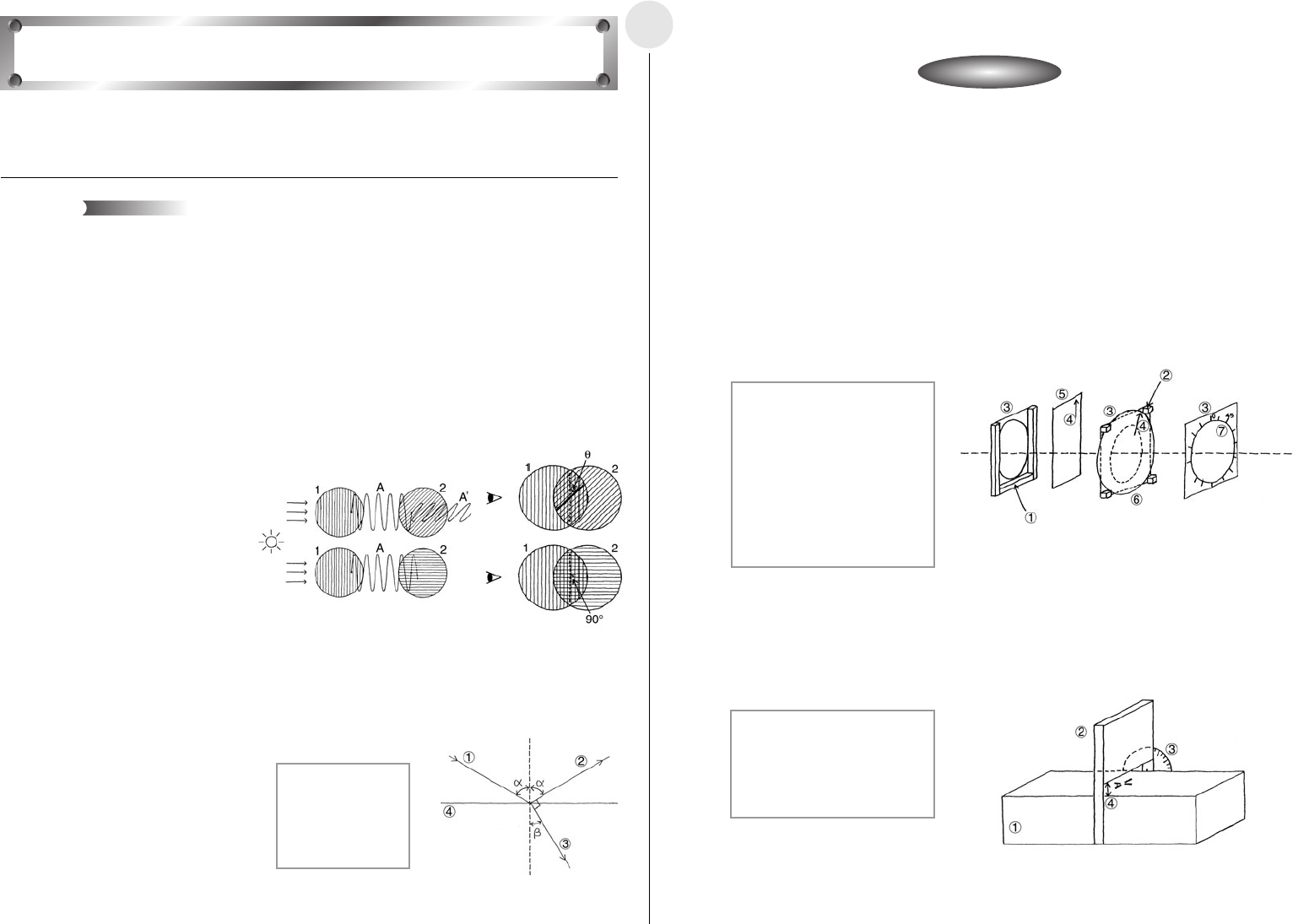
20020601
English
Activity: SetupActivity: Setup
2-5-1
í Equipment
Polarizers (2) Thick Paper Wood Penlight
Glass Screen Protractor
Optical Measurement Setup (EA-200, graphic scientific calculator, data communication
cable, optical probe)
í Preparing the Polarizers
u Cut holes in three sheets of thick paper, and use the protractor to measure and mark
angles on one of them.
u Mark the polarizing direction on the polarizers, and cut out one as a circle.
u Affix the wood frame and blocks to the thick paper, sandwich the polarizer between the
two sheets of paper as shown in the illustration.
í Preparing the Glass Stand
u Fix the screen one centimeter above the glass surface that will be struck by the incident
light.
u Affix the protractor in accordance with the screen position.
This activity investigates the relationship between reflection, refraction, and polarization of
light.
Light is electromagnetic radiation that has the properties of transverse waves. Sunlight
includes transverse waves that oscillate in various directions.
A polarizer allows only light vibrating in a specific direction to pass, which means that
sunlight coming out the other side is vibrating in that direction. This is called “polarization of
light.” Stacking together two polarizers with their polarization directions oriented
perpendicular to each other “extinguishes” the light, which means that no light penetrates
the second polarizer.
The expression below represents the change in the amplitude of light passing through the
second polarizer. Since light quantity changes in proportion to the square of its amplitude,
the light passing through the second polarizer is darker than the original light.
A’
=
Acos
θ
A
’
: Amplitude of Light
Polarized by Polarizer 2
A : Amplitude of Light
Polarized by Polarizer 1
θ
(°):Angle of Polarization
Direction of Two Polarizers
Most light is polarized when it is reflected or refracted by the boundary surface of material
where electromagnetic fields meet the required boundary conditions.
Especially at an angle called “Brewster’s angle,” polarization is completely linear, and
reflected light and refracted light polarization is orthogonal. The expression shown below
defines the conditions that such an angle needs to satisfy.
α
+
β
= 90°
α
(°):Angle of Incidence and
Angle of Reflection
β
(°):Angle of Refraction
Polarization of Light
Theory
1 Wood Frame
2 Wood Blocks
3 Thick Paper with Hole Cut
Out
4 Arrow Indicating Polarizing
Direction
5 Removable Polarizer
6 Circular Polarizer
7 Angle Markings
1 Glass
2 Screen
3 Protractor
4 Distance Between Screen
and Glass Surface: 1cm
1 Incident Light
2 Reflected Light
3 Refracted Light
4 Boundary
Surface


















